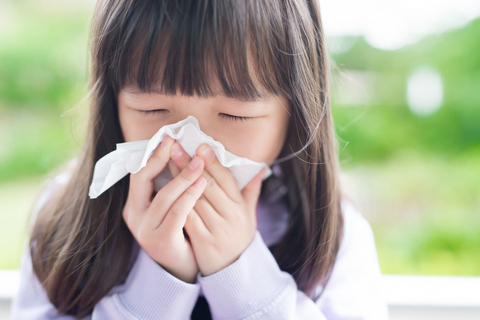How to Control Asthma Triggers at Home

Asthma exacerbations are commonly triggered by exposure to allergens and irritants within the home. In a study published in the American Journal of Preventive Medicine, reducing asthma triggers in children through home interventions were reported to reduce the number of days with asthma symptoms, the number of school days missed and the number of asthma acute care visits per year. Therefore, do-it-yourself home interventions are actually effective in improving the overall quality of life and productivity in children and adolescents with asthma.
To treat asthma properly, conditions in the home environment must be addressed. The most common asthma triggers within the home include allergens from house dust mites, pets, cockroaches, rodents, and mould as well as irritants such as cigarette smoke and indoor air pollutants. Reducing these asthma triggers in the home can be accomplished through multiple strategies, such as fıxing the home condition and modifying behaviours such as smoking and failing to seal food. Accordingly, the following steps should be taken to control asthma triggers at home:
1. Dust Mites
Use allergen-impermeable/dust mite-proof pillows and mattress covers, as well as wash bedding in hot water of more than 60-degree celsius. If high temperature water is not available, an similar effect can be achieved with cooler water together with detergent and bleach. Remove old carpet and reduce home humidity to less than 60% using dehumidifiers or central air conditioners. Besides that, avoid sleeping or lying on upholstered furniture. In children’s beds, minimize the number of stuffed toys, and wash them weekly.
It is recommended to vacuum the house twice a week. Wear a dust mask (from a hardware store) and get a vacuum cleaner with a HEPA filter or a double-layered bag.
2. Pets
Removing pets from the home is the most effective method to reduce exposure to pet dander in sensitized patients. Alternatively, keeping pets out of bedrooms can reduce airborne pet dander allergen levels by fıvefold. The patient’s bedroom door should be kept closed. Upholstered furniture and carpets should be removed, or isolate the pet from these items to the best extent possible. High-efficiency particulate air (HEPA) cleaners can also reduce airborne dander.
3. Cockroaches
Remove food and water sources, clean surfaces and floors, seal trash containers, store food carefully, use gel baits to exterminate roaches, and seal cracks and small holes in the residence to keep roaches out. Poison baits, boric acid, and traps are preferred to other chemical agents because the latter can be irritating when inhaled by persons who have asthma. If a spray is used, the home should be well ventilated, and the person who has asthma should not be indoor until the odour goes away. Care should be taken so that young children do not have access to cockroach baits and poisons.
4. Mice and rats
Integrated pest management techniques can help reduce mouse and rat allergen. These include fılling holes, vacuuming, cleaning, using low-toxicity pesticide, placing traps, and storing food carefully.
5. Mould
Mould-sensitive people can be protected by removing mould from any surfaces; discarding mould-contaminated materials (e.g., carpet, ceiling tiles); and addressing sources of moisture responsible for mould growth. This includes fixing leaking faucets, pipes, or other sources of water.
6. Cigarette smoke
Smokers with asthma or with children who have asthma should stop smoking through counselling and other support programs. If the parents are unwilling to stop smoking, complete smoking bans in the home have been shown to have a small but noteworthy reduction in cigarette smoke exposure.
7. Indoor pollutants
If possible, do not use a wood-burning stove, kerosene heater, fireplace, unvented gas stove, or heater. Try to stay away from strong odours and sprays, such as perfume, talcum powder, hair spray, paints, new carpet, or particle board. When possible, choose cleaning and personal care products that are odour and fragrance-free.
A variety of triggers in the home can worsen asthma symptoms. Effective home interventions require a multifaceted, comprehensive approach to manage respiratory conditions better. You should aim to eliminate or reduce all possible allergens through the aforementioned steps because individual steps alone are reported to be less effective.
